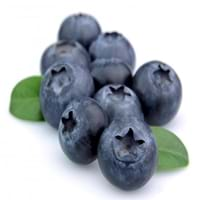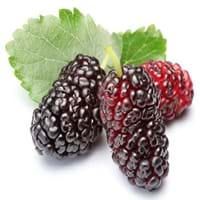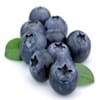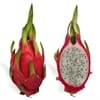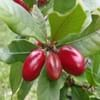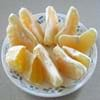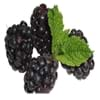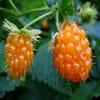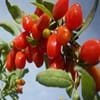Health Benefits
Cancer prevention, Heart care, Increases metabolic rate, Strengthening of bones, Treatment of skin Diseases
Anti-aging benefits, Boosts immune system, Cancer prevention, Flu treatment, Hair care, Heart care, Improves eye vision, Increases metabolic rate, Kidney stone treatment, Maintains healthy cholesterol level, Skin cleansing, Skin rejuvenation, Treatment of common cold, Treatment of skin Diseases
General Benefits
Anti oxidant properties, Boosts immune system, Digestive aid, Eye care, Improves blood circulation, Sore throat treatment
Boosts immune system, Controls blood sugar levels, Flu treatment, Improves eye vision, Maintains healthy cholesterol level, Treatment of common cold
Skin Benefits
Anti-aging benefits, Reduces wrinkles, Skin rejuvenation, Treatment of skin diseases
Anti-aging benefits, Skin cleansing, Treatment of skin diseases
Hair Benefits
Protects hair
Protects hair, Regulates hair growth
Allergy Symptoms
Abdominal pains, Coughing, Diarrhea, Itching, Runny nose, Sneezing, Swelling of mouth, tongue or lips, Wheezing
Breathing difficulty, Itching, Nasal congestion, Redness of eyes, Runny nose, Sneezing
Side Effects
Allergic reaction
Decrease in blood sugar levels, Allergic reaction
Best Time to Eat
Best if taken as a breakfast (or empty stomach), As a snack in the late afternoon, Don't consume at night and before bed, Eat the fresh ones, avoid mixing with any other foods, don't eat after meal., Morning time (before lunch)
Best if taken as a breakfast (or empty stomach), As a snack in the late afternoon, Don't consume at night and before bed, Eat the fresh ones, avoid mixing with any other foods, don't eat after meal., Morning time (before lunch)
Vitamin A (Retinol)
Not Available
Vitamin B6 (Pyridoxin)
Not Available
Vitamin B9 (Folic acid)
Not Available
Vitamin C (Ascorbic Acid)
Vitamin E (Tocopherole)
Not Available
Vitamin K (Phyllochinone)
Not Available
Lutein+Zeaxanthin
Not Available
Calories in Fresh Fruit with Peel
Calories in Fresh Fruit without Peel
Not Available
Not Available
Calories in Frozen Form
Not Available
Calories in Dried Form
Not Available
Calories in Canned Form
Not Available
Not Available
Season
Summer
Spring, Summer
Varieties
Dwarf Huckleberry, Cascade Huckleberry, Mountain huckleberry and Blackwinter Huckleberry
Charparral, Pendula, Teas, Bellaire and Lingan
Color
Blue, Purple, Purplish black
Pink, Purple, White
Origin
North America
China
Grows on
Not Available
Trees
Soil Type
Loamy, Sandy, Well-drained
Clay, Loam
Climatic Conditions
Humid, Warm
Sunny
Facts about
- "I'm your huckleberry" is a way of saying that one is just the right person for a given job.
- The phrase "a huckleberry over my persimmon" was used to mean "a bit beyond my abilities".
- It can take up to 10 years for a tree to produce mulberry fruit.
- Mulberry leaves are fed to silkworms to enhance silk production.
- In Germany, they say that devil uses root of mulberry tree to polish his boots.
Top Producer
United States of America
China
Other Countries
Canada
Colombia, Egypt, India, Indonesia, Kenya, Mexico, Pakistan, Peru, Russia, United States of America
Top Importer
Canada
Not Available
Botanical Name
Gaylussacia brachycera
Morus Alba
Synonym
Not Available
Morus atropurpurea or Morus multicaulis
Subkingdom
Tracheobionta
Tracheobionta
Division
Magnoliophyta
Magnoliophyta
Class
Magnoliopsida
Magnoliopsida
Subclass
Asteridae
Alismidae
Family
Ericaceae
Moraceae
Species
G. brachycera
M. alba
Generic Group
Heath
Mulberry
Difference Between Huckleberry and Mulberry
We might think that Huckleberry and Mulberry are similar with respect to nutritional value and health benefits. But the nutrient content of both fruits is different. Huckleberry and Mulberry Facts such as their taste, shape, color, and size are also distinct. The difference between Huckleberry and Mulberry is explained here.
The amount of calories in 100 gm of fresh Huckleberry and Mulberry with peel is 37.00 kcal and 43.00 kcal and the amount of calories without peel is Not Available and Not Available respectively. Thus, Huckleberry and Mulberry belong to Low Calorie Fruits and Low Calorie Fruits category.These fruits might or might not differ with respect to their scientific classification. The order of Huckleberry and Mulberry is Ericales and Rosales respectively. Huckleberry belongs to Ericaceae family and Mulberry belongs to Moraceae family. Huckleberry belongs to Gaylussacia genus of G. brachycera species and Mulberry belongs to Morus genus of M. alba species. Beings plants, both fruits belong to Plantae Kingdom.
